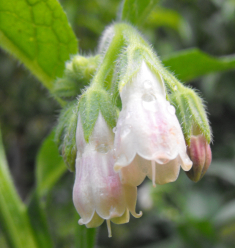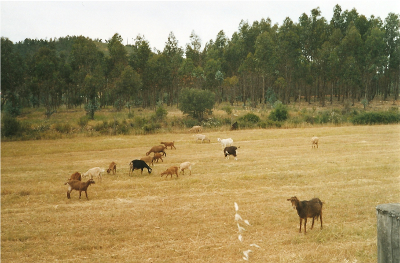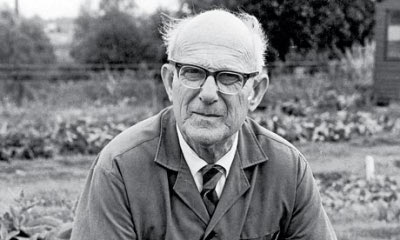
Types of comfrey
 In English, the word comfrey is
used for all Symphytums. The same term has been in
use since at least the 1st Century A.D. Pliny, a Roman, called it
conferva. This later became cumfria, then (Old French) confrie, and finally the English
spelling of today.
In English, the word comfrey is
used for all Symphytums. The same term has been in
use since at least the 1st Century A.D. Pliny, a Roman, called it
conferva. This later became cumfria, then (Old French) confrie, and finally the English
spelling of today.
Symphytum
officinale or Common
Comfrey with white or cream to yellowish flowers also has a red to
purple flowered variety S.officinale var. patens. Other species of Symphytum cover the full range of colours
from white through to yellow and blue through to purple.
The Common Comfrey was
introduced to North America as early as the 17th Century, Josselyn
(1672) calling it comferie. Symphytum is derived from Dioscorides, who
was contemporary with Pliny, his Greek word for it being variously
reported as Syumphuo, Sumphutum, Sumphuton,
and no doubt other similar words. He recognised and used more
than one species. This is not surprising, about 40 have been
identified (native to most of Europe and Western Asia) with 18 in
Turkey alone, so presumably nearby countries have at least several of
these.
 Of most interest to those people
wishing to use
comfrey for plant and livestock feeding are hybrids of the species Symphytum x uplandicum, known as Russian
Comfrey, a cross between
S.officinale and another Symphytum. S. x uplandicum
is a naturally occurring hybrid, the original being found in Uppland,
Sweden, and not Russia. Later discovered hybrids were from
Russia. These hybrids rarely set seed, but will provide the
pollen to cross with S.officinale and give yet another
variation.
Of most interest to those people
wishing to use
comfrey for plant and livestock feeding are hybrids of the species Symphytum x uplandicum, known as Russian
Comfrey, a cross between
S.officinale and another Symphytum. S. x uplandicum
is a naturally occurring hybrid, the original being found in Uppland,
Sweden, and not Russia. Later discovered hybrids were from
Russia. These hybrids rarely set seed, but will provide the
pollen to cross with S.officinale and give yet another
variation.
Borage, Borago
officinalis,
can also provide pollen to produce a hybrid. Both Borage and
Comfrey are, of course, in the family Boraginaceae. When an
unsorted mixture of varieties of S. x uplandicum
was sent to North America in the 1950s there was a Cold War between the
USA and Russia, so it was given the name Quaker Comfrey.
 The most common cultivar in use
amongst livestock people is S. x uplandicum
'Bocking 14' but some, such as myself, use 'Bocking 4'. Together
with all the other Bocking cultivars, at least 21, these were first
identified by Lawrence
Hills from amongst a large assortment of
collections from various people and places.
He called each collection a strain or mixture after the people or
places where they originated. He did not breed or develop the
cultivars as is often reported; they already existed. In this
context, please note that a lot of current internet sites replicate
other sites in their supposed information. Lawrence Hills warned
against such repetitiveness long before the Internet was invented.
The most common cultivar in use
amongst livestock people is S. x uplandicum
'Bocking 14' but some, such as myself, use 'Bocking 4'. Together
with all the other Bocking cultivars, at least 21, these were first
identified by Lawrence
Hills from amongst a large assortment of
collections from various people and places.
He called each collection a strain or mixture after the people or
places where they originated. He did not breed or develop the
cultivars as is often reported; they already existed. In this
context, please note that a lot of current internet sites replicate
other sites in their supposed information. Lawrence Hills warned
against such repetitiveness long before the Internet was invented.
All comfreys only actively
grow in summer in temperate climates, dying down in the autumn. S.officinale sets seed that germinates very
easily. So do some of the other Symphytums. Stick to the Russian
hybrids if you want to control the size of your plot.
Some herbalists believe that
S.officinale is the preferred, or even only,
species for
safe medicinal use. Officinale means "of the (herbalist's)
shop." Gerard in his Herball
gives an unusual use for the root juice in ale; it is "given to drinke
against the paine in the back gotten by wrestling, or overuse of women."
Alan
McDonald has been experimenting with comfrey on farms around the world
for 15 years. His new book, How Not to Make
Millions --- But Still Enjoy a Rich Rural Life is available
for 99 cents on Smashwords, and you can also read about his adventures
for free on his blog. Stay
tuned to this blog for more of his comfrey experiments tomorrow.
Want more in-depth information? Browse through our books.
Or explore more posts by date or by subject.
About us: Anna Hess and Mark Hamilton spent over a decade living self-sufficiently in the mountains of Virginia before moving north to start over from scratch in the foothills of Ohio. They've experimented with permaculture, no-till gardening, trailersteading, home-based microbusinesses and much more, writing about their adventures in both blogs and books.
Want to be notified when new comments are posted on this page? Click on the RSS button after you add a comment to subscribe to the comment feed, or simply check the box beside "email replies to me" while writing your comment.
